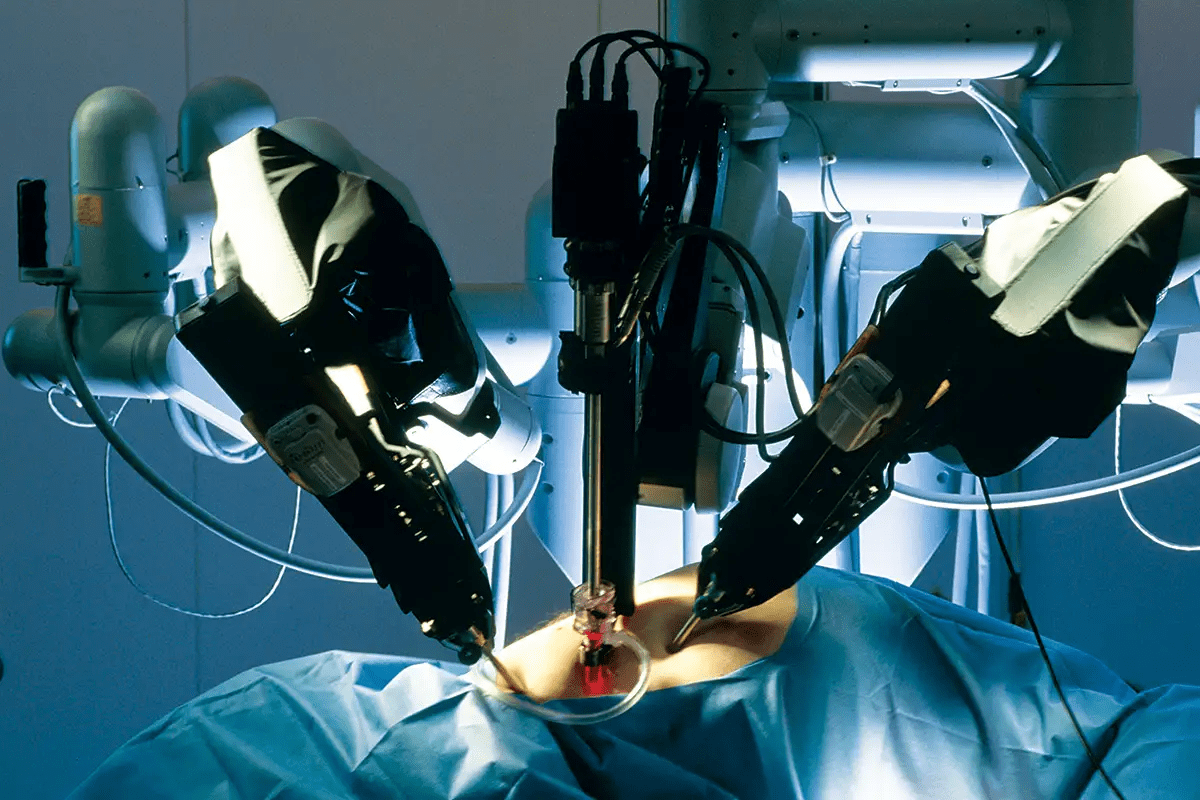Last Updated on November 26, 2025 by Bilal Hasdemir

Starting TC chemo, a mix of docetaxel and cyclophosphamide, is a big step in fighting breast cancer. It’s effective but brings tough side effects.
The hardest days usually hit in the first week after treatment. Neutropenia, a big drop in white blood cells, makes infections more likely. This happens around day 7.
At Liv Hospital, we know how hard these side effects can be. Our team offers care with compassion and skill. We use the latest methods and focus on the patient to help through the toughest TC chemo treatment times.
Key Takeaways
- TC chemo combines docetaxel and cyclophosphamide to treat breast cancer.
- The worst side effects often occur within the first week after infusion.
- Neutropenia is a significant risk, peaking around day 7.
- Compassionate care is key in managing side effects.
- Liv Hospital provides modern protocols and patient-centered support.
Understanding TC Chemotherapy
TC chemotherapy combines docetaxel and cyclophosphamide for breast cancer treatment. At Liv Hospital, we use TC chemo safely and care for patients well. This ensures top treatment for our patients.
What Is TC Chemo: Docetaxel and Cyclophosphamide Combination
TC chemotherapy uses two strong drugs: docetaxel (Taxotere) and cyclophosphamide. Docetaxel stops cancer cells from growing. Cyclophosphamide damages their DNA, stopping them from making more cells. This makes TC chemo a strong treatment for breast cancer.
Docetaxel can cause serious allergic reactions, like anaphylaxis. This can be deadly and needs quick medical help. Our team watches patients closely and acts fast if needed.
How TC Chemo Works Against Breast Cancer
TC chemotherapy targets breast cancer cells with docetaxel and cyclophosphamide. These drugs stop cell growth and damage DNA. This reduces tumor size and stops cancer from growing.
The exact way TC chemo works is by stopping the cell cycle of cancer cells. This leads to cell death. It helps shrink tumors and stop cancer from spreading.
Typical TC Chemo Treatment Schedule and Protocols
The TC chemo treatment schedule has several cycles, each lasting weeks. The exact plan depends on the patient’s needs and cancer type. At Liv Hospital, our oncologists create a treatment plan that works best for each patient.
Knowing the treatment schedule helps patients prepare. Our healthcare team supports patients through treatment. We make sure they get the care they need to fight cancer.
The TC Chemo Timeline: When Side Effects Occur
The journey with TC chemo has a timeline for side effects. Knowing this timeline helps patients get ready for what’s coming. We’ll show you when side effects usually happen during TC chemo treatment.
First 24-48 Hours After Infusion
Right after the TC chemo infusion, some people might feel immediate reactions. These can be infusion-related reactions like fever, chills, or allergies. It’s important to watch these symptoms and tell your doctor. Some might also feel tired or have mild nausea.
Days 3-5: Increasing Symptom Intensity
Days 3-5 see symptoms getting worse. Neutropenia, or low white blood cells, starts to show. Patients might feel more tired, and some might have mild nausea or vomiting. Keep watching your symptoms and follow your doctor’s advice.
Days 7-10: Peak Side Effect Period
Days 7-10 are the worst for side effects with TC chemo. Neutropenia hits its lowest point around day 7, making it key to avoid infections. Patients often feel very tired, and some might face mouth sores or significant hair loss. It’s important to manage these side effects well during this time.
Recovery Phase: Days 11-21
Days 11-21 mark the recovery phase. White blood cell counts go up, and some side effects start to fade. But, fatigue can last, and patients should stay careful about infections. The body starts to heal, and energy levels might start to get better. This is a time for recovery and adjustment, and healthcare support is key.
Knowing the TC chemo timeline helps patients prepare for the tough days and know when to ask for help. While everyone’s experience is different, knowing the general pattern of side effects can help manage TC chemo treatment.
Identifying the TC Chemo Worst Days
Patients on TC chemo often find their toughest days between days 5 and 10. During this time, the side effects of the treatment can be very intense. This can really affect their quality of life.
Why Days 5-10 Are Typically the Hardest
The days between 5 and 10 after starting TC chemo are usually the hardest. This is because the drugs, docetaxel and cyclophosphamide, take time to fully affect the body. Neutropenia, or low white blood cell count, often starts here, raising the risk of infections.
As white blood cells drop, patients become more at risk for infections. It’s a key time to watch closely and take care. Patients should know these risks and try to avoid infections.
Neutropenia Peak Around Day 7
Day 7 is a big deal because neutropenia usually hits its peak then. The drop in white blood cells can be steep, making patients very vulnerable to infections. Regular visits to healthcare providers are key to keep an eye on blood counts and handle any issues fast.
Individual Variation in Side Effect Timing
While days 5-10 are tough for many, everyone’s experience is different. Health, the TC chemo dose, and how well someone can handle the meds all play a part. This affects when and how bad side effects are.
It’s important for patients to team up with their healthcare team. They can help figure out what’s best for each person. This way, patients can deal with TC chemo’s challenges better and have a better treatment experience.
Side Effect #1: Neutropenia and Infection Risk
TC chemotherapy can lead to a dangerous side effect called neutropenia. This condition means you have too few neutrophils. Neutrophils are white blood cells that fight infections.
How Dangerous White Blood Cell Drops Really Get
TC chemo, with its docetaxel, can lower white blood cells a lot. This makes patients more likely to get infections. The biggest drop in white blood cells happens around day 7 after treatment.
Neutropenia is serious and can be life-threatening. When you have fewer neutrophils, even small infections can get worse fast.
Infection Warning Signs During Neutropenic Period
It’s important to know the signs of infection when you’re neutropenic. Look out for:
- Fever above 100.4°F (38°C)
- Chills
- Sore throat
- Cough
- Shortness of breath
Medical Interventions and Precautions
To deal with neutropenia and prevent infections, doctors may use:
- Antibiotics to treat or prevent infections
- Growth factors to help make more white blood cells
- Regular checks on blood counts
Patients can also take steps to lower their infection risk. This includes washing hands often, staying away from sick people, and avoiding crowded places.
| Aspect | Description |
|---|---|
| Cause | Docetaxel in TC chemo lowers white blood cell count |
| Peak Risk Period | Around day 7 after treatment |
| Warning Signs | Fever, chills, sore throat, cough, shortness of breath |
| Medical Interventions | Antibiotics, growth factors, monitoring blood counts |
| Precautions | Good hygiene, avoid sick contacts, avoid crowded areas |
Side Effect #2: Debilitating Fatigue
TC chemo often leaves patients feeling extremely tired. This fatigue makes simple tasks hard to do. It greatly affects a patient’s life quality.
TC chemotherapy can make you feel very tired. This tiredness is not just feeling sleepy. It’s a deep lack of energy that can really hold you back.
Why TC Chemo Causes Extreme Exhaustion
TC chemo makes you tired because it affects cells in your body. This includes cells in your bone marrow that make red blood cells. With fewer red blood cells, your body gets less oxygen. This leads to feeling very tired.
The mix of docetaxel and cyclophosphamide in TC chemo can also cause anemia. Anemia is when you don’t have enough red blood cells. This makes you even more tired.
How Bad Fatigue Typically Gets for Patients
The level of tiredness from TC chemo can differ for everyone. But, many say their tiredness gets worse around their treatment times. This is often between days 5-10 after getting the treatment.
Some people have reported acting strangely while on this medicine. It’s important to watch how tired you are and tell your doctor if it’s really bad.
Energy Conservation Strategies
To deal with extreme tiredness, it’s key to save your energy. We suggest doing things slowly, breaking tasks into smaller parts, and resting when needed.
Also, focus on what’s most important and ask for help when you can. Eating well, drinking plenty of water, and doing gentle exercises like yoga can help too.
| Energy Conservation Tips | Benefits |
|---|---|
| Pacing activities | Reduces overall fatigue |
| Prioritizing tasks | Conserves energy for essential activities |
| Gentle exercises | Improves energy levels and overall well-being |
By knowing why TC chemo makes you tired and using these tips, you can manage this side effect better. This can help you feel better during your treatment.
Side Effect #3: Muscle and Joint Pain Severity
TC chemo often leads to muscle and joint pain, mainly due to docetaxel. This pain can really affect a patient’s life during treatment.
The Docetaxel Connection to Body Aches
Docetaxel, a part of TC chemo, causes a lot of muscle and joint pain. This side effect can sometimes stop treatment. It’s not clear how docetaxel causes pain, but it might affect nerve cells and cause inflammation.
Peak Pain Days and Typical Intensity
The pain from TC chemo varies among patients. Most say the pain gets worse around days 3-7 after treatment. Some feel very bad pain that lasts for days. The pain can be mild, stiff, or sharp in muscles and joints.
Effective Pain Management Approaches
It’s key to manage muscle and joint pain well to keep patients comfortable and on track with treatment. We suggest a few ways to manage pain:
- Medications: Doctors might give out pain relievers like acetaminophen or NSAIDs.
- Alternative therapies: Acupuncture, massage, or physical therapy can help.
- Lifestyle adjustments: Gentle exercise, heat or cold therapy, and relaxation can also help.
Patients should work with their healthcare team to find the best pain relief. This way, they can deal with pain better during TC chemo treatment.
Side Effect #4: Gastrointestinal Distress
Patients on TC chemo often face stomach problems that affect their life quality. These issues include nausea, vomiting, diarrhea, and constipation. Each symptom can be different in how it affects a patient.
Nausea and Vomiting: How Severe It Gets
Nausea and vomiting are tough side effects of TC chemo. The severity can range from mild to severe. Some patients even feel sick before treatment starts. The mix of docetaxel and cyclophosphamide can make these symptoms worse.
To help with nausea and vomiting, we use antiemetic meds. These include serotonin blockers, steroids, and NK1 blockers. Personalized antiemetic plans can really help patients feel better and stick to their treatment.
Managing Diarrhea and Constipation
Diarrhea and constipation are also common during TC chemo. Diarrhea can cause dehydration and electrolyte imbalances if not managed. Constipation can be very uncomfortable and even lead to bowel obstruction in bad cases.
We tell patients to eat hydrating foods with lots of electrolytes when they have diarrhea. For constipation, we suggest eating more fiber, drinking plenty of water, and using laxatives or stool softeners if needed.
Nutritional Challenges During Treatment
Nutritional challenges are common during TC chemo because of stomach side effects. Maintaining adequate nutrition is key for recovery and treatment response.
We suggest patients talk to a registered dietitian for a personalized nutrition plan. This might include eating smaller meals, avoiding certain foods, and drinking enough water. Supplements can also help support health.
Side Effect #5: Peripheral Neuropathy
Patients on TC chemotherapy might get peripheral neuropathy, a serious nerve issue. This can really hurt your daily life, making your hands and feet feel numb, tingle, or hurt.
Recognizing Nerve Damage Symptoms
Peripheral neuropathy from TC chemo shows up in different ways. You might feel burning, numbness, tingling, or pain in your arms, hands, legs, or feet. See your doctor fast if you notice these signs, as quick action can help.
Statistics: How Many Experience Severe Neuropathy
Many patients on TC chemo get peripheral neuropathy. The severity varies, but a lot face severe cases. Knowing this can help you talk to your doctor about managing side effects.
Short-term vs. Long-term Nerve Effects
Peripheral neuropathy from TC chemo can last a short time or forever. Some get better after treatment, but others don’t. It’s key to work with your doctor to manage symptoms. For some, stem cell therapy might help with nerve pain.
Side Effect #6: Skin and Nail Toxicity
It’s important for patients to know about skin and nail toxicity from TC chemo. TC chemotherapy, made of docetaxel and cyclophosphamide, can lead to skin and nail issues.
Hand-Foot Syndrome Severity Levels
Hand-foot syndrome (HFS) is a common side effect of TC chemo. It causes redness, swelling, and sometimes peeling on hands and feet. The severity can differ from person to person.
Severity Levels of Hand-Foot Syndrome:
| Grade | Symptoms |
|---|---|
| 1 | Mild skin changes, no pain |
| 2 | Moderate skin changes, pain not interfering with daily activities |
| 3 | Severe skin changes, pain interfering with daily activities |
Nail Changes and Damage During Treatment
Nail changes are another big side effect. These include brittleness, discoloration, and sometimes complete nail loss. These changes can be upsetting but usually go away.
Timeline for Skin and Nail Recovery
Recovery times vary. Skin and nail changes usually start to get better a few weeks after TC chemo treatment ends.
- Skin Recovery: Usually starts 1-2 weeks after treatment
- Nail Recovery: Can take months for nails to fully grow back
Knowing about these side effects and their recovery times helps patients prepare and take care of their skin and nails during and after TC chemo.
Side Effect #7: Cognitive and Emotional Impacts
Patients going through TC chemotherapy may face cognitive and emotional changes. These changes can be tough, but knowing about them helps patients and caregivers get ready and manage them well.
“Chemo Brain” Symptoms and Duration
“Chemo brain” refers to the thinking problems caused by chemotherapy. Symptoms include memory issues, trouble focusing, and feeling confused. These symptoms can vary in intensity and duration. They usually get better after treatment ends, but sometimes last for months or years.
- Memory lapses and forgetfulness
- Difficulty with concentration and attention
- Confusion and disorganization
Emotional Challenges During Worst Days
The emotional side of TC chemotherapy can be tough, with mood swings, anxiety, and depression. These emotional challenges are most intense during the worst days of treatment, usually around days 5-10 after the infusion.
- Recognizing the signs of emotional distress
- Seeking support from mental health professionals
- Engaging in stress-reducing activities
Mental Health Support Strategies
Managing cognitive and emotional impacts needs a mix of approaches. We suggest cognitive training, counseling, and lifestyle changes to help patients cope.
By understanding the cognitive and emotional effects of TC chemotherapy and using the right support, patients can handle their treatment better.
Conclusion: Navigating Through TC Chemo Treatment
It’s key to know the side effects of TC chemo to get through treatment well. By knowing the tough days and tackling side effects early, patients can handle TC chemo better.
We keep working to improve and find new treatments to help patients. It’s important to see your doctor often. This ensures your treatment is on track and solves any issues quickly.
Dealing with TC chemo needs a full plan. This includes managing side effects, finding ways to recover, and facing challenges head-on. At Liv Hospital, we aim to give top-notch care to international patients. We make sure they get the best care all through their treatment.
Using good recovery strategies and talking openly with your healthcare team helps. This way, you can beat the hard parts of TC chemo and get a good treatment result.
FAQ
What are the worst days during TC chemo treatment?
The worst days are usually days 5-10, with day 7 being the worst for neutropenia. Patients often feel very tired, have muscle and joint pain, and stomach issues during this time.
How can I manage neutropenia during TC chemo?
To manage neutropenia, watch for signs of infection like fever, chills, and sore throat. Seek medical help right away. Doctors may give antibiotics or growth factors to help.
What are the most effective ways to alleviate muscle and joint pain caused by TC chemo?
To ease muscle and joint pain, try medication, acupuncture, and gentle exercise. Relaxation techniques can also help.
How can I cope with gastrointestinal distress during TC chemo?
To deal with stomach issues, use medication, change your diet, and get nutritional support. These steps can help with nausea, vomiting, diarrhea, and constipation.
What is peripheral neuropathy, and how is it related to TC chemo?
Peripheral neuropathy is nerve damage from TC chemo, causing numbness, tingling, and pain. Knowing about it can help manage it and improve life quality.
How can I manage fatigue during TC chemo?
To fight fatigue, understand its causes and use energy-saving strategies. Rest when needed and prioritize tasks.
What are the cognitive and emotional impacts of TC chemo, and how can I manage them?
TC chemo can cause memory issues, trouble concentrating, and emotional problems. Mental health support, like counseling, can help manage these effects.
How long does it take to recover from TC chemo side effects?
Recovery from TC chemo side effects can take about 11-21 days. It depends on how severe the side effects are and your overall health.
What support is available for patients undergoing TC chemo treatment?
Patients can get help from their healthcare team, including Liv Hospital. They offer top-notch care and support for international patients.
References
- National Center for Biotechnology Information (NCBI) / PubMed Central. (n.d.). Retrieved from https://pmc.ncbi.nlm.nih.gov/articles/PMC4041377/
- Breast Cancer Now. (n.d.). Docetaxel (Taxotere). Retrieved from https://breastcancernow.org/about-breast-cancer/treatment/chemotherapy/chemotherapy-drugs/docetaxel-taxotere








